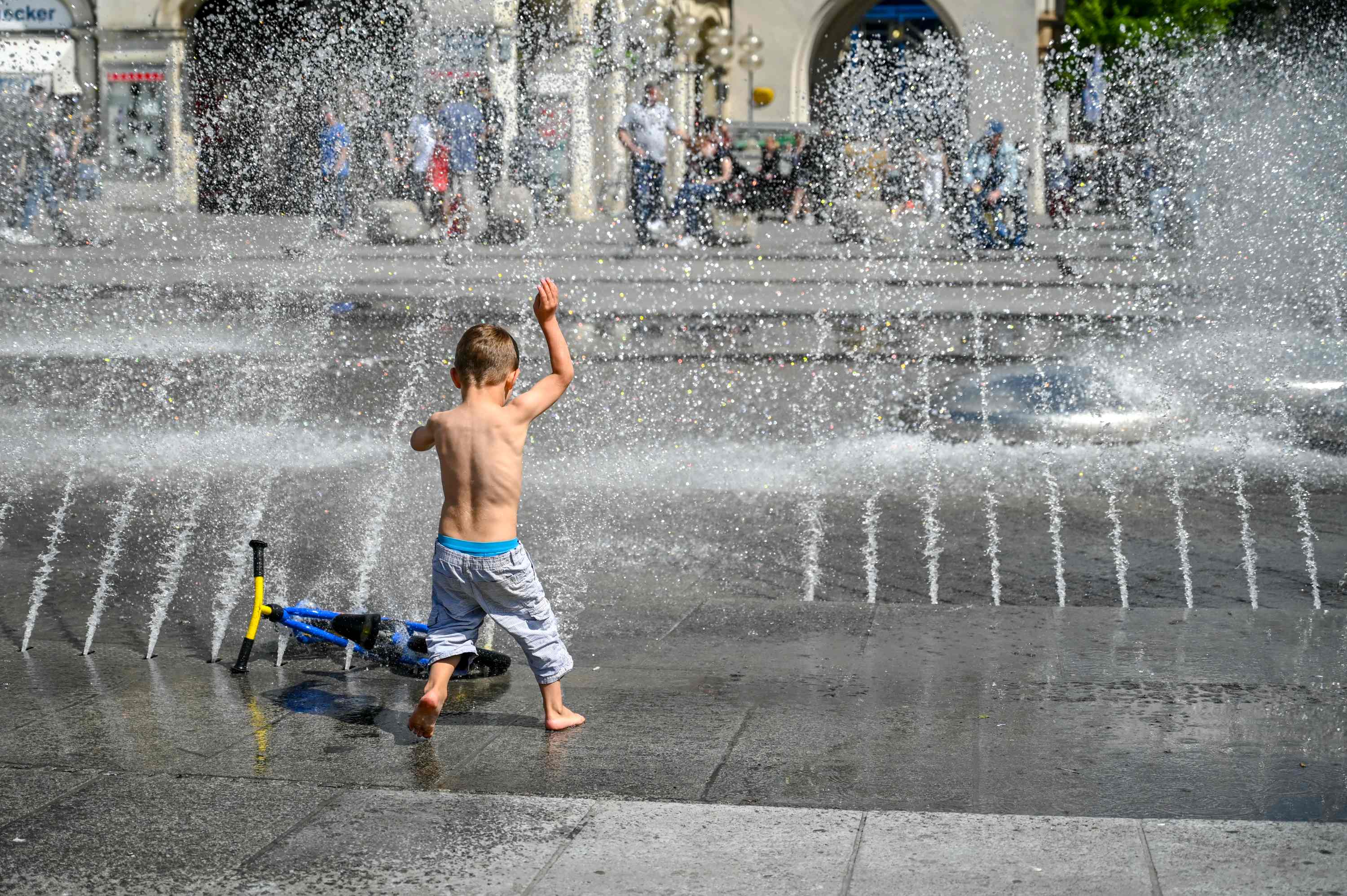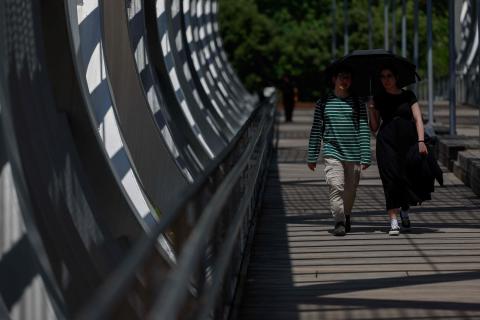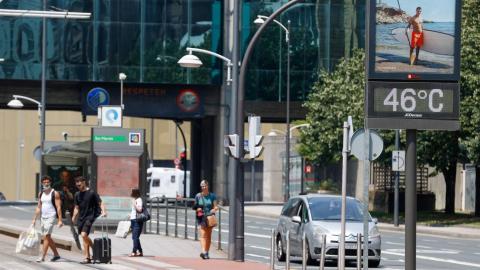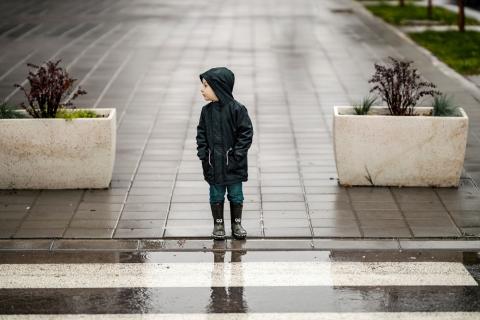In which areas do children most affected by heat live in Spain?
In total, in 2024, there were three heat waves that affected the peninsula and the Balearic Islands, according to the AEMET, and another seven "notable hot episodes" between May and August. These episodes of extreme heat no longer only occur in July and August, when there is no school.
Obviously, those who suffer most from the heat live mainly in the south of the country and in Mediterranean areas, although it is important to bear in mind the thresholds set by the Ministry of Health, which vary according to the 182 meteo-health zones. The thresholds at which health alerts are activated range from 23.9ºC on the Asturian coast to 40.4ºC in the Cordoba countryside.
We also know that urban areas are almost six times more vulnerable to extreme heat than rural areas, according to a study based on data from 2000 to 2013. There are socio-economic disparities: population groups with poorer working conditions and higher percentages of housing in poor condition are more vulnerable, according to the analysis, which includes 10 Spanish provinces.
But not all cities are the same: the heat hits hardest in those characterised by "high urban density, few green areas, relatively old or poorly insulated housing," summarises Mar Satorras, a researcher in the sustainability department at the Institut Metròpoli in Barcelona, to SMC Spain. According to the researcher, Barcelona, Valencia and Seville, among other cities, fit this profile.
Has anyone calculated how many children suffer from extreme heat in Spain?
According to a survey on living conditions conducted by the National Institute of Statistics (INE), one third of people in Spain in 2023 stated that they were unable to keep their homes at a suitable temperature during the summer, compared to one quarter in the 2012 survey. These figures are higher than the proportion of people who said they could not keep their homes at a suitable temperature during the cold months: 27.5% in 2023 and 17.9% in 2012.
Using the climate change vulnerability index (IVAC) developed by the Institut Metròpoli in the Barcelona metropolitan area, it was estimated that more than 50,000 children between the ages of three and 12 live in areas of high vulnerability to heat in this area. This proportion represents 15.8% of the total for this age group, according to a report published by the Fundació Bofill in 2024.
How does heat affect your health?
Babies are especially vulnerable to heat, but this article focuses on children between the ages of 3 and 12, summarising the direct and indirect effects.
Direct effects
High temperatures have direct effects on people's health, such as sunstroke, exhaustion, and heatstroke. In children, related symptoms may include nausea, headaches, and muscle cramps, especially after outdoor exercise, according to a 2023 UNICEF technical note.
In addition, high temperatures are linked to an increase in mental health problems in children, according to UNICEF; they can cause stress, irritability, general malaise, and difficulty sleeping and concentrating. The pace of learning at school slows down as the number of hot school days increases, as shown by a study published in Nature Human Behaviour in 2021, which analysed school performance data in 58 countries.
However, there is a lack of data and studies on the impact of extreme heat on children's health. There is very little scientific evidence linking high temperatures to behavioural and neurodevelopmental problems, or to obesity and child development problems, warned Mònica Ubalde and Mark Nieuwenhuijsen, researchers at ISGlobal in Barcelona, in a report published in 2022 by the Sant Joan de Déu Hospital. There are some studies linking extreme heat to foetal development, respiratory and immune health problems, but the data is insufficient or inconsistent, they add.
However, in an article, Ubalde points out that "the mechanisms of sweating and vasodilation are not as efficient [in children] as in adults’ and that ‘their ability to drink fluids and their response to dehydration may be more limited". In addition, children "may have difficulty identifying and communicating that they are hot" and their tendency to be on the move can make it difficult to regulate body temperature.
Indirect effects
There are other risks associated with extreme temperatures, such as:
- Worsening air quality, which can influence the incidence of cardiovascular or respiratory disease episodes.
- An increase in food- or water-borne illnesses, as pathogenic microorganisms proliferate on hotter days.
- The expansion of the geographical area and periods of risk for diseases transmitted by mosquitoes and other vectors that thrive in periods of extreme temperatures.
Do children perceive heat in the same way as adults?
According to the citizen science project Vigilants de la Calor (Heat Watchers), which involved children from three schools in the Barcelona metropolitan area, children's perception of thermal comfort was similar to that of adults in their homes in 45% of cases in summer. In 29% of cases, they perceived it as hotter than adults.
Differences in metabolic rate, activity level, classroom density, and children's limitations in adapting to the environment by opening or closing windows or adjusting their clothing, among other factors, could explain these differences from adult standards, according to the authors of a study published in 2021, conducted in Seville during a summer with 10- and 11-year-old students. This perception also varies around the world. The Seville study found a comfort temperature of 24.5 °C, which is above the thermal comfort temperature in studies with children in the United Kingdom, for example.
How can we adapt the school environment to climate change?
Several applied research groups are studying ways to transform schoolyards and buildings. Refugis climàtics a les escoles (Climate shelters in schools, in Spanish) is a project carried out between 2018 and 2022 to transform 11 schools in Barcelona through “green” initiatives (planting trees, replacing hard surfaces in playgrounds with natural elements), “blue” (installing drinking fountains, play areas and cooling facilities) and “grey” (adapting buildings and including elements that provide shade). In addition, the schools were opened to the rest of the local community during non-school hours.
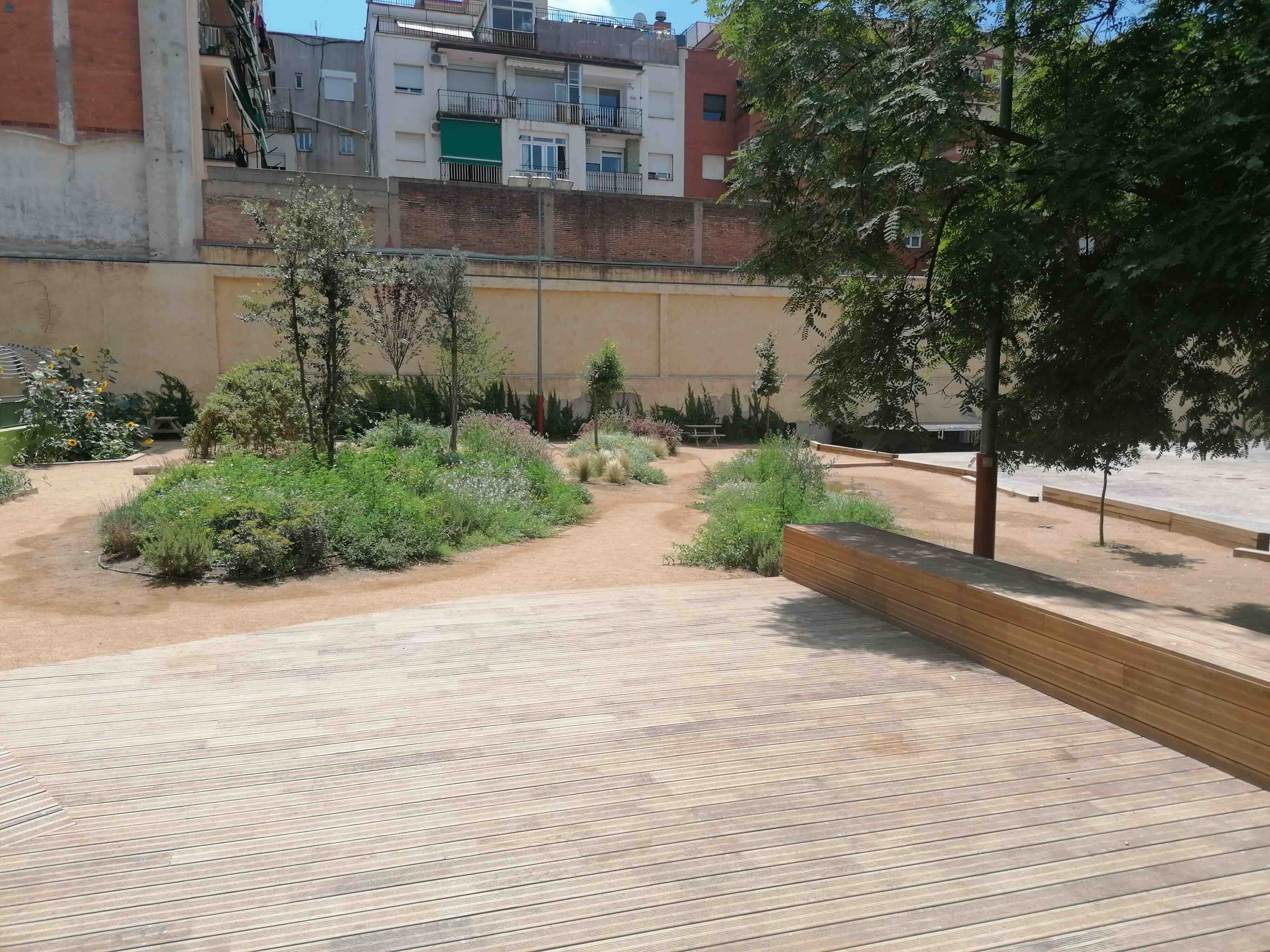
"Most schools still have very traditional, paved playgrounds, where sports courts are the main use," explains Francesc Baró, a researcher at the Vrije Universiteit Brussel (Belgium) and co-coordinator of the CoolSchools project, to SMC Spain. This European Union-funded project proposed integrating nature into schools in Barcelona, Brussels, Paris and Rotterdam between March 2022 and February 2025. These changes help regulate temperatures, promote well-being, encourage physical activity and outdoor play, and provide equitable access to green spaces for children from all socioeconomic groups, according to a guide for schools produced by the project.
"In environments that have undergone these transformation processes, we are seeing a positive effect on children's health, both in terms of cognitive development and in terms of behaviour and attention," Baró highlighted at a briefing organised by SMC Spain on 4 June. The idea behind Coolschools is that transformed schools "can act as hubs at the neighbourhood level", so that their benefits can extend beyond the schools themselves, said Baró.
When it comes to adapting buildings, priority should be given to passive architectural measures, such as insulating facades and roofs, promoting natural ventilation and using light colours, according to Aurora Monge, a researcher in architecture at the University of Navarra, in an article published by The Conversation in 2023. In Barcelona, for example, the Escoles + Ventilades (More Ventilated Schools, in English) project, run by the Polytechnic University of Catalonia, is coordinating pilot tests to promote passive systems that can improve air quality and thermal comfort in schools.
When these passive measures "are not sufficient to guarantee temperatures that affect not only the well-being and academic performance of children, but also their health, they will be accompanied by the installation of the necessary active air conditioning systems," Monge recommended in her article.
In environments that have undergone these transformation processes, a positive effect on children's health is being observed
Francesc Baró
Last April, Monge and his colleagues launched the COL3NATUR project (Renaturalisation of buildings, playgrounds and school routes for adaptation to climate change), also with European funding and pilot projects in Pamplona, France and Portugal. The project aims to contribute to local authorities' strategies to promote nature-based solutions in schools. ‘Many local councils have action strategies [...], but few know how to implement them so that the results are in line with the objectives they have set themselves and are measurable,’ Monge told SMC Spain.
What do children do to adapt to the heat?
It is not within their power, nor that of most of their families, to improve the insulation of their homes, put up awnings or install air conditioning systems. In the Vigilants de la Calor project, children mentioned several solutions they adopted in their homes, such as eating ice cream, drinking more water, taking showers or using a fan.
Of course, the solutions used depend on each person's financial means: only 4% of responses mentioned going to the pool, the beach or another cool place, compared to 32% of responses that focused on eating or drinking. According to the INE's Living Conditions Survey, in 2024, a third of the Spanish population could not afford to go on holiday away from home for at least one week a year.
Can or should school schedules and calendars be adapted during periods of extreme heat?
In Andalusia, regulations allow schools to ‘flexibilise’ their timetables on days of excessive heat. "This flexibilisation may involve the early departure of students on days when the orange or red alert [for extreme heat] is activated. Such early departure may not take place before 12 noon," according to elDiario.es.
But experts are not convinced by these kinds of measures. Cristina Linares, a senior scientist at the Carlos III Health Institute, commented in the same newspaper in 2023: "Who is going to be at home to look after these children if their parents are at work? Are we going to send their grandfather to pick them up in the middle of a heatwave, where he could suffer a heatstroke on the way?" Baró raises another key question: "To what extent is the right to education compromised by all these climate impacts?"
